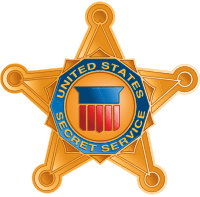Hiram C. Whitley
Colonel Hiram C. Whitley (August 6, 1834 – April 19, 1919) was the second Chief of the United States Secret Service.
| Hiram C. Whitley | |
|---|---|
 | |
| 2nd Chief of the U.S. Secret Service | |
|
In office 1869 – 1875 | |
| President | Ulysses S. Grant |
| Preceded by | William P. Wood |
| Succeeded by | Elmer Washburn |
| Personal details | |
| Born |
August 6, 1834 Camden, Maine, U.S. |
| Died |
April 19, 1919 (aged 84) Emporia, Kansas, U.S. |
Early life
Whitley was born in Camden, Maine on August 6, 1834 to Dr William Whitley, a Glasgow-born doctor and surgeon, and Hannah D. McCoombs, a Maine local. In 1840, his family moved to Lake County, Ohio, where he became a pupil at the Western Reserve Teachers' Seminary,[1] a Mormon teaching school in Kirtland.[2]
Leaving school at the age of fifteen, he became a drover for two years, after which he moved to Massachusetts where he worked for his uncle in the fishing industry at Gloucester. In 1856, Whitley married Catherine Webster (Katie) Bates of Cambridge; they subsequently had two daughters, Katie and Sabra. The following year, the Whitleys moved to the recently founded Lawrence, Kansas, where he worked in the grocery trade. In 1859, being drawn to Pike's Peak Gold Rush, Whitley sold out of his grocery business and moved to Colorado, where he failed to strike gold. Moving on, the Whitleys settled in New Orleans, with Whitley working the Red River as a steamboatman.[1][3][4]
Civil War
In the year from April 1861, when the Civil War commenced, through to April 1862, Whitley continued to work the Red River. He professed some sympathy for the Confederacy, and drilled with local companies without seeing active service. He was on the Starlight at Shreveport, 700 miles (1,100 km) from New Orleans when it was seized by a Confederate committee, who aimed to use it to blockade the river against Yankee forces. Having heard of the Union Army's April 25 capture of New Orleans,[1][3][4] Whitley, the "mulatto" second cook, and another "liberty loving African", stole the steamer's yawl. Travelling mainly by night, they reached New Orleans in seven days.[1],[5]:25–26
There, Whitley reported to Major General B.F. Butler. Butler referred him to the provost-marshal of the Department of the Gulf, Colonel Jonas H. French, who employed Whitley as a detective.[6]:21
Whitley declined an offer of a captaincy in the Fifth Louisiana Regiment by the General in charge of New Orleans's defence, William H. Emory. Instead, he was appointed as a Major in the Seventh Louisiana Regiment.[1][3][4]
U.S. Secret Service
Whitley was appointed Director of the United States Secret Service by President Ulysses S. Grant in 1869, four years after its inception. Under Whitley, the Secret Service introduced criminal files, a written Code of Conduct, and an official badge for its agents. Whitley directed anti-Klan activity at the behest of President Grant.[7][8]
He was arrested as an alleged part of the so-called safe burglary conspiracy.[8][9]
Later life
He retired to Emporia, Kansas where he became a leading businessman.
Whitley died aged 84 in Emporia on April 19, 1919, from an "inflammation of the bladder".[10]
References
- 1 2 3 4 5 Connelley, William E. A Standard History of Kansas and Kansans. Retrieved 29 January 2016.
- ↑ Annals of Cleveland 1818-1835. 25. 1842. pp. 117–18. Retrieved 19 March 2015.
- 1 2 3 Cutler, William G. (1883). History of the State of Kansas. Retrieved 19 March 2016.
- 1 2 3 Frank W. Blackmar, ed. (1912). Kansas: a cyclopedia of state history, embracing events, institutions, industries, counties, cities, towns, prominent persons, etc. Retrieved 19 March 2016.
- ↑ Whitley, Hiram C. In It.
- ↑ Memoirs of the United States Secret Service.
- ↑ Jeffreys-Jones, Rhodri. The FBI: A History. Retrieved 29 January 2016.
- 1 2 "In the 19th century, a different Secret Service, but not without controversy". Washington Post. October 1, 2014. Retrieved 29 January 2016.
- ↑ "The Safe-Burglary". April 10, 1876. Retrieved 29 January 2016.
- ↑ "The Emporia State Research Studies". 1969. Retrieved 29 January 2016.
- "The American Law Review". 9. 1875. Retrieved 29 January 2016.
- Grant, Susan-Mary. A Concise History of the United States of America. Retrieved 29 January 2016.
- Huston, Jan. "Hiram C. Whitley: A builder of Emporia". Emporia Living: 80–90.
Works
- In It (1894)
| Government offices | ||
|---|---|---|
| Preceded by William P. Wood |
Chief, United States Secret Service 1869–1874 |
Succeeded by Elmer Washburn |
